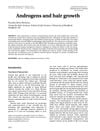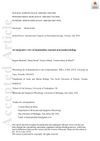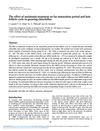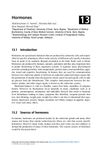The Effect of Melatonin Implants Administered from December Until April on Plasma Prolactin, Triiodothyronine, and Thyroxine Concentrations and on the Timing of the Spring Moult in Cashmere Goats
April 1995
in “
Animal Science/Animal science
”
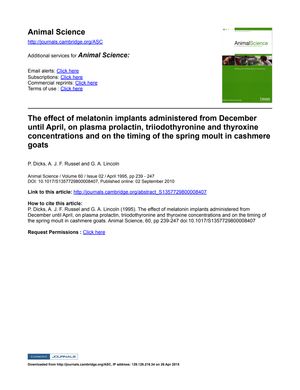
TLDR Melatonin implants can change the seasonal prolactin levels and hair growth in adult cashmere goats but not in juveniles, and don't delay spring moult for better fiber harvesting.
In a study conducted 29 years ago, researchers investigated the effects of melatonin implants on cashmere goats to determine if they could manipulate the timing of the spring moult and improve fiber harvesting efficiency. The study involved 40 female cashmere goats, 20 juveniles and 20 adults, with half of each group receiving 18 mg melatonin implants on December 11, February 1, and April 1. In adult goats, melatonin significantly advanced the peak plasma prolactin concentrations by 7 weeks and the onset of the spring moult, as well as initiating earlier growth of guard hair and cashmere. However, in juvenile goats, melatonin had no significant effects on plasma prolactin concentrations, moult timing, or hair follicle growth. Additionally, there were no significant effects on live weight or T3 and T4 concentrations in either age group. A second experiment with three adult goats showed that a single melatonin implant on April 1 significantly reduced plasma prolactin concentrations over three weeks compared to four untreated goats. The study concluded that melatonin implants can modify the seasonal cycle of prolactin secretion and hair follicle activity in adult cashmere goats, but the protocol used could not delay the onset of the spring moult to aid in cashmere harvesting.
